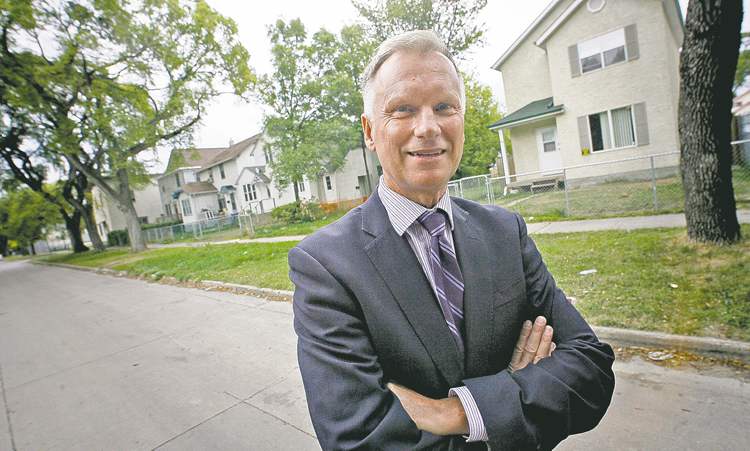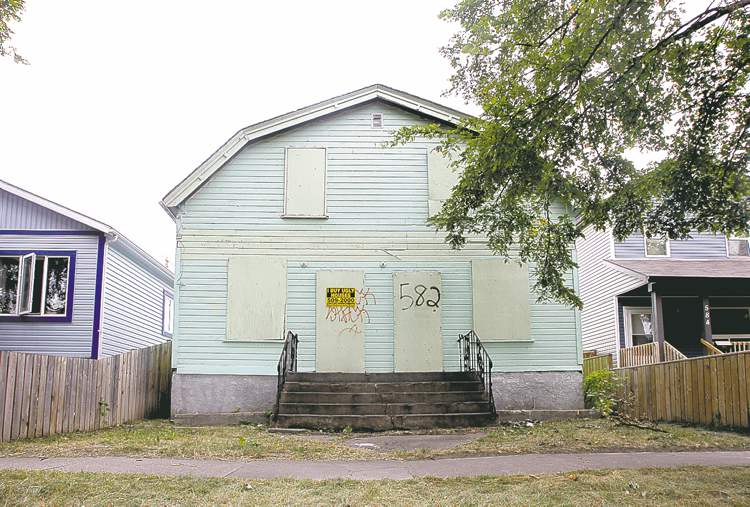One person fixes a lot of blight
Student's canvass targets eyesores
Advertisement
Read this article for free:
or
Already have an account? Log in here »
To continue reading, please subscribe:
Monthly Digital Subscription
$1 per week for 24 weeks*
- Enjoy unlimited reading on winnipegfreepress.com
- Read the E-Edition, our digital replica newspaper
- Access News Break, our award-winning app
- Play interactive puzzles
*Billed as $4.00 plus GST every four weeks. After 24 weeks, price increases to the regular rate of $19.00 plus GST every four weeks. Offer available to new and qualified returning subscribers only. Cancel any time.
Monthly Digital Subscription
$4.75/week*
- Enjoy unlimited reading on winnipegfreepress.com
- Read the E-Edition, our digital replica newspaper
- Access News Break, our award-winning app
- Play interactive puzzles
*Billed as $19 plus GST every four weeks. Cancel any time.
To continue reading, please subscribe:
Add Free Press access to your Brandon Sun subscription for only an additional
$1 for the first 4 weeks*
*Your next subscription payment will increase by $1.00 and you will be charged $16.99 plus GST for four weeks. After four weeks, your payment will increase to $23.99 plus GST every four weeks.
Read unlimited articles for free today:
or
Already have an account? Log in here »
Hey there, time traveller!
This article was published 12/09/2012 (4773 days ago), so information in it may no longer be current.
A summer student hired to detail city housing-bylaw infractions in the William Whyte neighbourhood came up with a whopping 1,006 offences.
Hers was a pretty low-tech effort. Armed with nothing more than a clipboard and a pen, she walked the streets of the neighbourhood, noting broken windows, wonky steps, knee-high lawns and other eyesores. Back at the office, she’d send the city a separate email detailing each complaint.
She then mapped the area, using red dots to indicate bylaw infractions. Some streets are layered with dots. Some have few, usually streets with businesses and few homes.

The student doesn’t want her identity released, fearing repercussions from an irate property owner or gang member her report may inconvenience. She was hired by community activist Sel Burrows, who used a federal grant to pay her salary.
The cool thing is the efforts of the 21-year-old paid off. Within days, the city started acting on the complaints. Lawns were mowed. House repairs started. Streets that looked like slums showed improvement.
“It was so cool,” the student said. “I’m just one person.”
The city has two bylaws covering the appearances and conditions of properties. The Neighbourhood Livability By-Law, enacted in 2008, covers safety, structural and appearance issues. The 2010 Vacant Buildings By-Law deals with vacant, derelict or abandoned houses.
Peter de Graaf is the manager of the city’s community bylaw enforcement division. He says the city recommends people first talk to their neighbours about concerns and, if that doesn’t work, contact 311. The city says complaints will be investigated in fewer than 10 days. In 2011, the average was a week. Unsafe vacant buildings are seen within 24 hours.
The most common complaint is grass that needs mowing. The city fielded 3,500 “vegetation control” complaints last year. There are about 30 full-time bylaw-enforcement officers (BEOs), with an additional six or seven hired in the spring and summer.
After a complaint comes in, a BEO contacts the person with the concern for more information. They conduct an on-site inspection, speak to the property owner, take photos and try to work things out. If the owners don’t co-operate, they’re fined and the city puts the cost of cleaning up the property on their tax bill.
“If you do not maintain your property, you will pay,” says de Graaf.
A first offence nets a fine of between $200 and $400.
In 2009, 26 properties were cleaned up by the city. In 2011, there were 101. So far this year, there have been 88. More people are complaining and that’s a good thing, said de Graaf.
“It’s about quality of life, neighbourhood livability,” he says. “These community audits need to be applauded. Urban blight is significant.”
De Graaf says vacant houses are an issue for inspectors and area residents. In October 2010, the city had 577 vacant and dilapidated houses on its files. By 2012, the number had dropped to 390 as homes were either secured or torn down. Of those 390, 100 are in compliance with the bylaws — vacant but secure.

Winnipeg currently has 30 vacant houses whose owners have died and their survivors can’t be located. It can be a long legal process to get the houses dealt with.
Burrows is delighted with the work of his protege. Similar work was done in Point Douglas several years ago and helped clean up the area.
“If a place looks like a slum it gets treated like a slum,” he says. “We work closely with a lot of landlords. One of the things we point out to them is those little things are part of what makes a community look crummy. They can be fixed.”
Burrows says property owners are generally responsive.
“The huge majority of people will do the right thing if they’re presented with the right thing to do,” he says. “This makes a difference. How depressing it must be to look across the street at some of these places.”
One of the worst blocks mapped was Pritchard Avenue between Salter and Main streets. There are signs efforts to improve properties are being made. Porch railings have been repaired. Lumber is piled on a front step. Grass is short.
But there are still occupied homes with the rear windows boarded up, a few clearly abandoned houses and some places in desperate need of a coat of paint.
“People need to come forward,” says de Graaf. “It impacts quality of life, how we feel about our neighbours, how you feel about yourself. I think it impacts community well-being and property value.”
lindor.reynolds@freepress.mb.ca
William Whyte bylaw infractions
Click on any red dot below for information on the specific bylaw infraction(s) logged.
Use the plus and minus icons at left to zoom in or out. Click and drag on the map to move the viewable section.
Please note that addresses are approximate for some locations, especially in the case of missing house numbers and vacant lots.
Source: PowerLine
Map by Wendy Sawatzky

